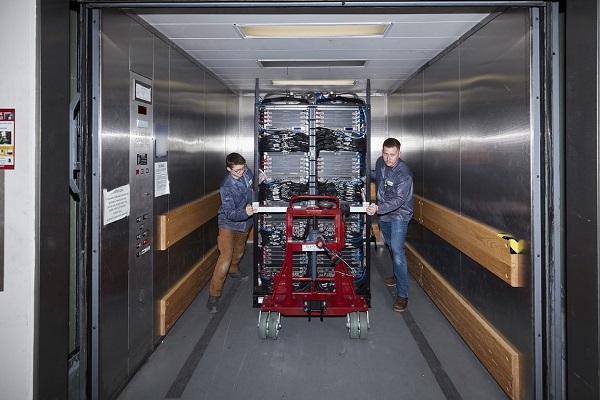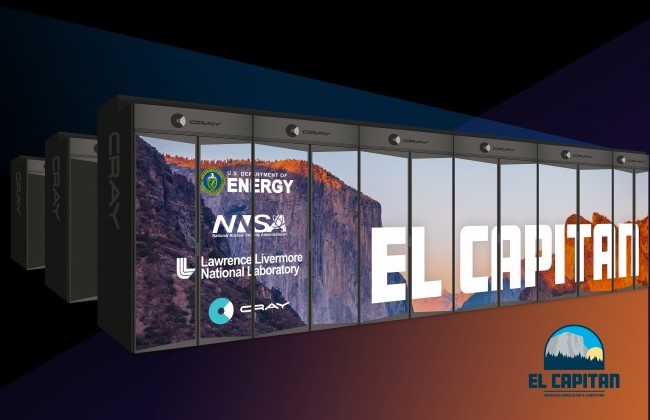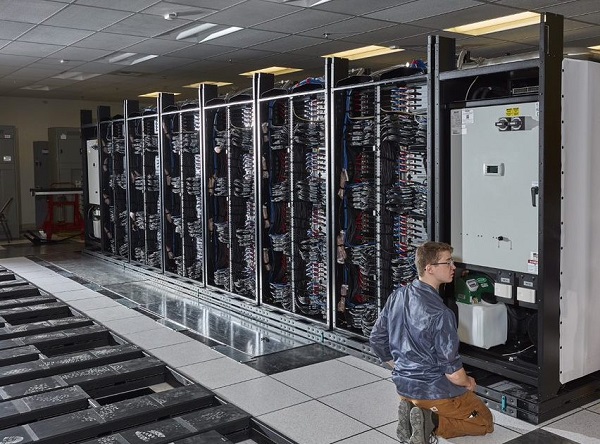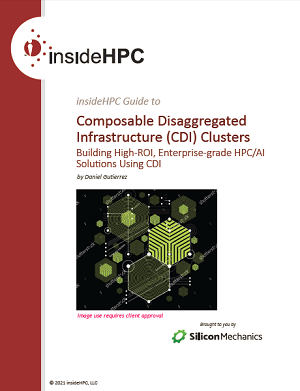
El Capitan component delivery at Lawrence Livermore National laboratory (credit: LLNL)
With pictures to prove it, Lawrence Livermore National Laboratory announced today it has begun receiving and installing components for El Capitan, what is expected to be the third exascale-class supercomputer in the U.S. The laboratory shared photos on social media today.
Projected to exceed 2 exaflops, El Capitan will likely be the most powerful supercomputer in the world at the time of acceptance in 2024, LLNL said. The system will be dedicated to national security work and ensuring the National Nuclear Security Administration laboratories — LLNL, Los Alamos and Sandia National Laboratories — “can maintain confidence in the nation’s nuclear deterrent…,” Livermore said in an email sent to the media today.
“El Capitan will likely be the most powerful supercomputer in the world at the time of acceptance next year,” LLNL said.
The news follows by two weeks an announcement from Argonne National Laboratory that Intel had delivered the final compute blade (10,624 blades in all) for the Aurora supercomputer now being installed at the Argonne Leadership Computing Facility. Intel said in its announcement that “later this year, Aurora is expected to be the world’s first supercomputer to achieve a theoretical peak performance of more than 2 exaflops … when it enters the TOP500 list.”
The Aurora system will be powered by Intel CPUs and GPUs and is based on the HPE Cray EX supercomputing architecture.

The HPE Cray-built El Capitan will be equipped with CPUs and GPU accelerators from AMD, as is the U.S.’s first exascake supercomputer, the Frontier system delivered last year to the Oak Ridge Leadership Computing Facility.
“With its advanced integrated CPU/GPU processors and an expanded memory capacity over LLNL’s current flagship supercomputer Sierra, El Capitan will provide scientists with state-of-the-art tools to perform the increasingly complex predictive modeling and simulation required by NNSA’s Stockpile Stewardship Program at a level of detail, accuracy and realism not possible today,” LLNL said. “And by combining simulations with artificial intelligence and machine learning, El Capitan will unlock new pathways to discovery in other scientific areas, including nuclear nonproliferation, counterterrorism and fusion energy.”

El Capitan installation at Lawrence Livermore National Laboratory (credit: LLNL)



